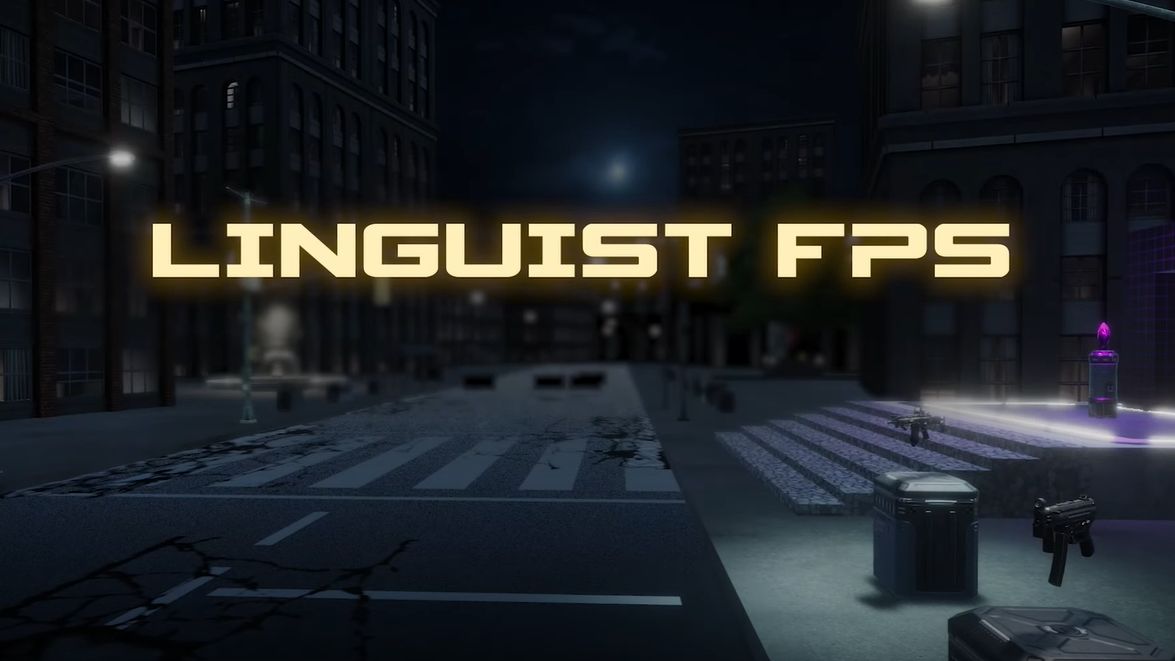Salve! Futile automatico, andiamo puttanelle! Oh, wait. That’s not quite right. I didn’t mean to say “Hey! Full automatic, let’s go b*****s!” What I meant to say is piacere di conoscerti.
Hopefully, that gives you an idea of what I experienced when playing Linguist FPS, a shooter that aims to teach you a second language while pumping bullets into killer robots. It’s like The Typing of the Dead (a very real House of the Dead offshoot), but instead of sharpening your typing abilities, you’re saving a city by brushing up on your vocabulary in an entirely different language.
Developers Rocket Boy Games want you to think there aren’t any quizzes masked as “fun games” like on many language learning apps. But, realistically, it’s a bunch of gamified puzzles with some shooting mechanics slapped on. Even the developers say “this game is a VERY basic indie quality FPS.” It’s a silly introduction to language learning with an FPS spin.
Gamers are put in the shoes of a second language-less protagonist who must follow instructions in order to complete missions and tasks — as in very basic tasks (e.g., opening a door or inputting numbers on a keypad). However, these simple tasks become more difficult when you’re commanded to Apri la porta in Italian or 九四五 in Mandarin. Oh, and there’s a timer counting down to make sure you complete these tasks on time. Veloce, indeed.
I’ve always been interested in picking up another language. I mean, who isn’t? Visiting another country and not knowing how to simply say “what’s up” is frustrating. Well, I like FPS games too, and wouldn’t you know it, Linguist FPS fell onto my lap(top). I gave it a go to see how much I could learn with the punchy sounds of a pistola firing, but you’d be an idiota to think gamers can speak a second language after finishing this roguelike.
As easy as uno, due, tre…
Choosing a language was easy, as I had recently visited Italy, eaten one too many quattro formaggi pizzas and drank delectable vino rosso. Oh, and watching The Sopranos recently likely tipped me towards the Italian way, too. However, there are a good 13 languages to choose from. This includes Spanish (Latin American and European), French, German, Japanese (Kana, Kanji and Romaji), Russian, Ukrainian, Portuguese, Korean, Chinese Mandarin (simplified) and Pinyin (Mandarin), Polish, Swedish and English (US, UK, and Australian). Once you choose, it’s time to start learning.

The training room is more than just a place to learn about each weapon in the game or how to crouch and jump; it’s essentially your first steps to learning another language. Safe to say, I spent quite some time learning the rules of the game while trying to memorise different icons, including letto (bed), mondo (earth), cristallo (crystal), soldi (money), and many more. For example, the narrator will tell you which icons to shoot, and if you get them right, you can proceed to the next area and repeat until you reach a crystal. Get them wrong? A granata falls on you. If your health reaches zero, you restart the whole level (even in the tutorial, weirdly).
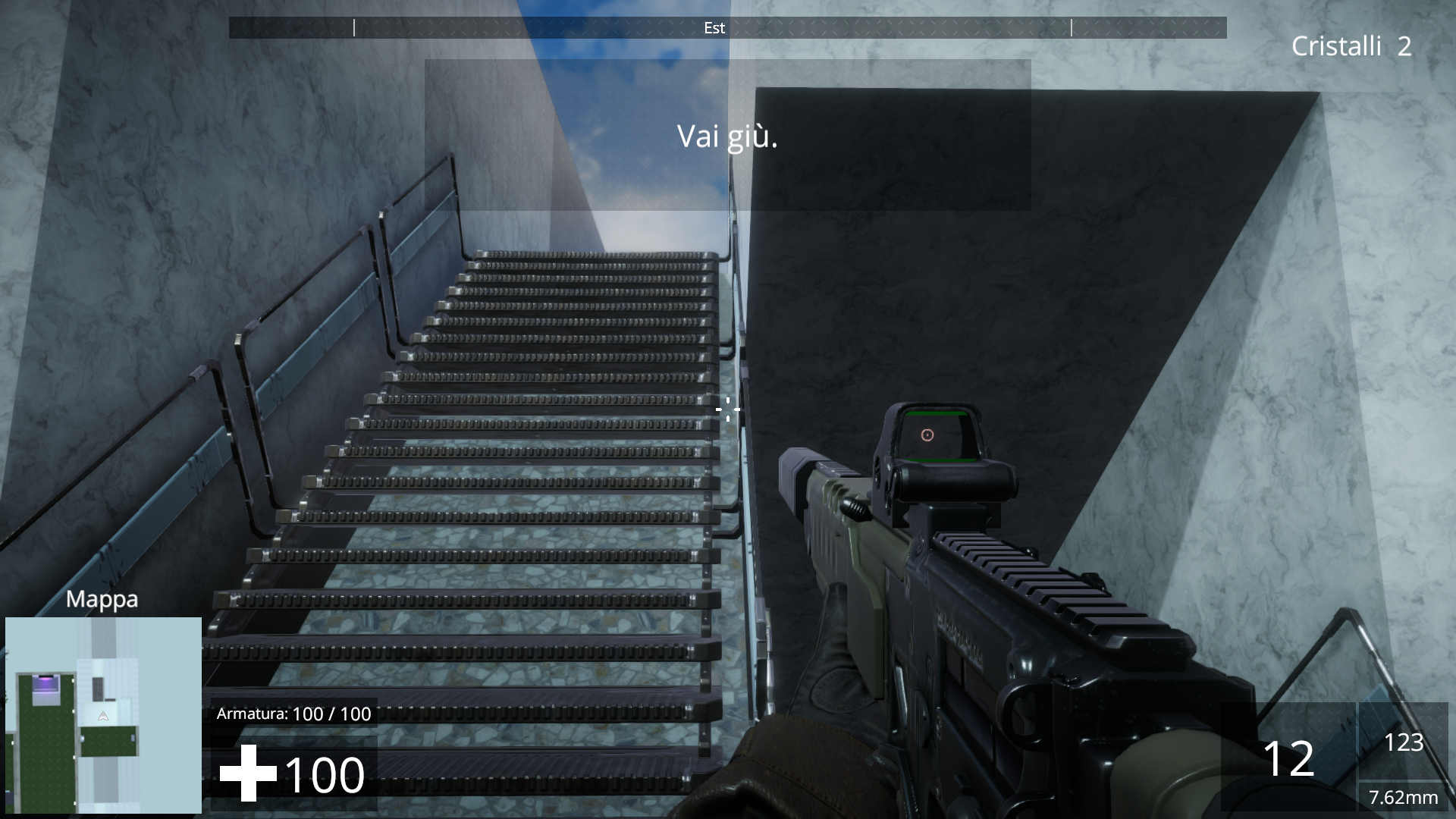
There are more exercises you must learn, including vai su or vai giu (going up or down), learning different colour doors such as Rossa, Verde, Blu, Viola, and more. You can get the hang of each relatively fast; the game makes you repeat these exercises frequently before progressing. There’s also food and drink, like beer, which prompts the narrator to state “Biera? Adesso?” That didn’t need much translation to decipher.
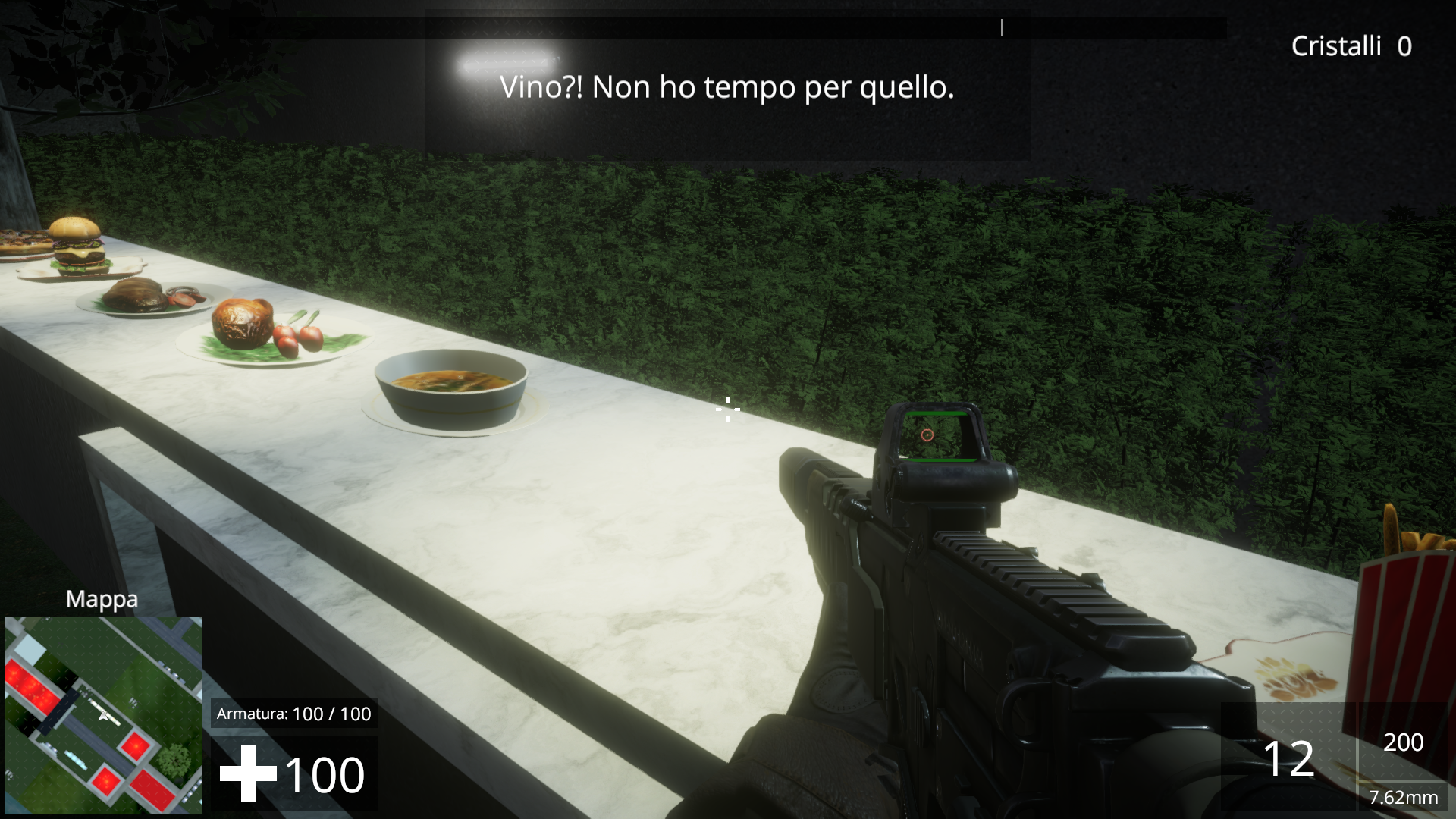
Once I learned the tricks of the trade in Italian, I ventured to the main game, which I thought would test my linguistic might with new challenges and words to figure out. That wasn’t the case.
Read, shoot, learn, repeat
As it turns out, what you learn in the training room is an exaggerated version of what you learn in the main game — just with more robots to shoot. It acts like a roguelike, impelling players to go through three open areas (la citta, la parco, il nightclub) while trying to survive waves of robots. To get more ammo, health and better guns, you’ll need to enter different buildings that can only be accessed by following instructions in your second language of choice.
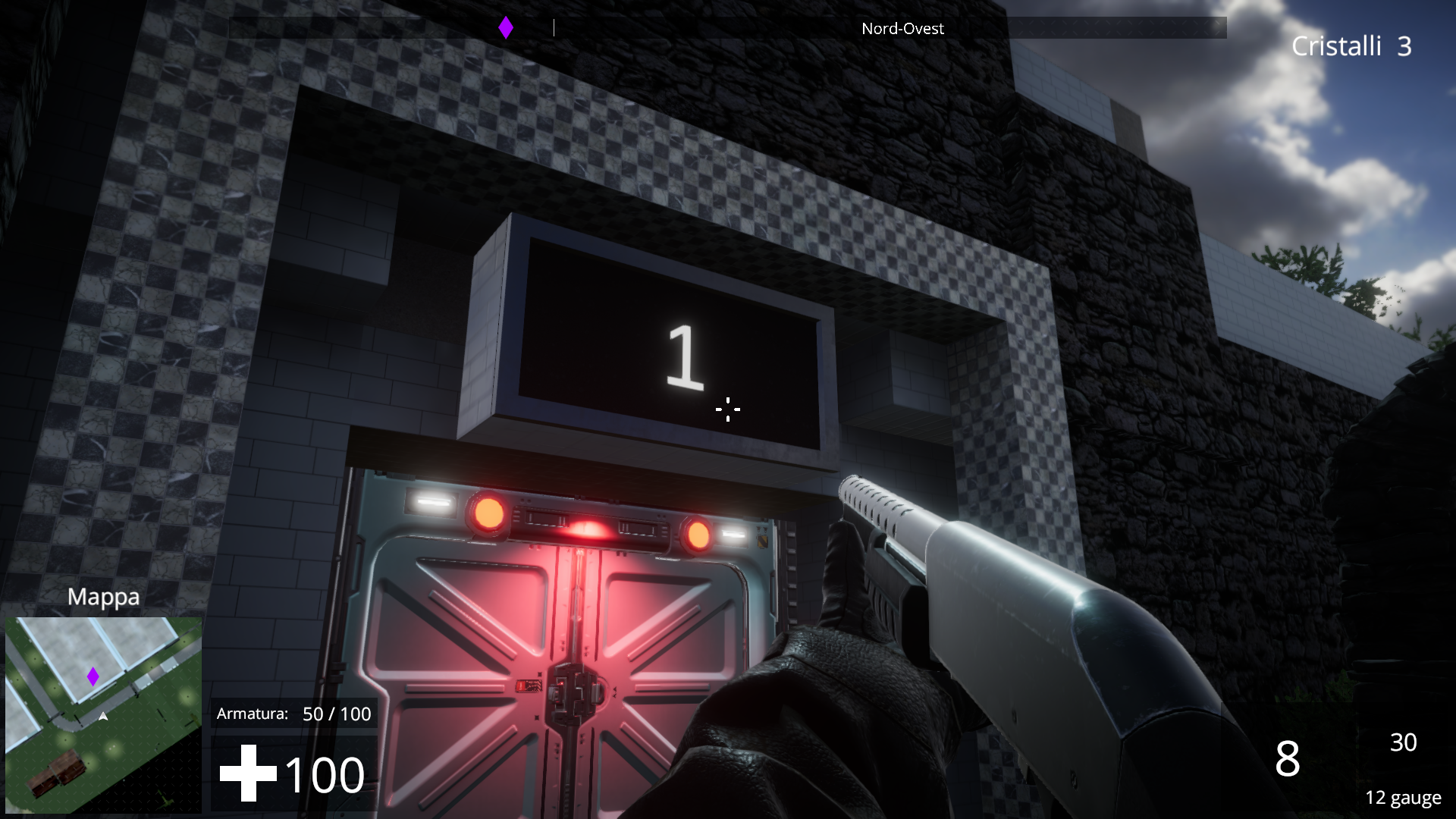
That’s it. That’s the whole game. Look, I wasn’t expecting anything more, and it can get challenging once you reach a certain point — but not learning-wise. I got the hang of memorizing numbers and punching them into a keypad, knowing what coloured door to go through (giallo/yellow was my favourite), and knowing all the different icons to shoot (such as uomo, donna, felice, or triste). However, you can only do them for so long before you want to learn something else.
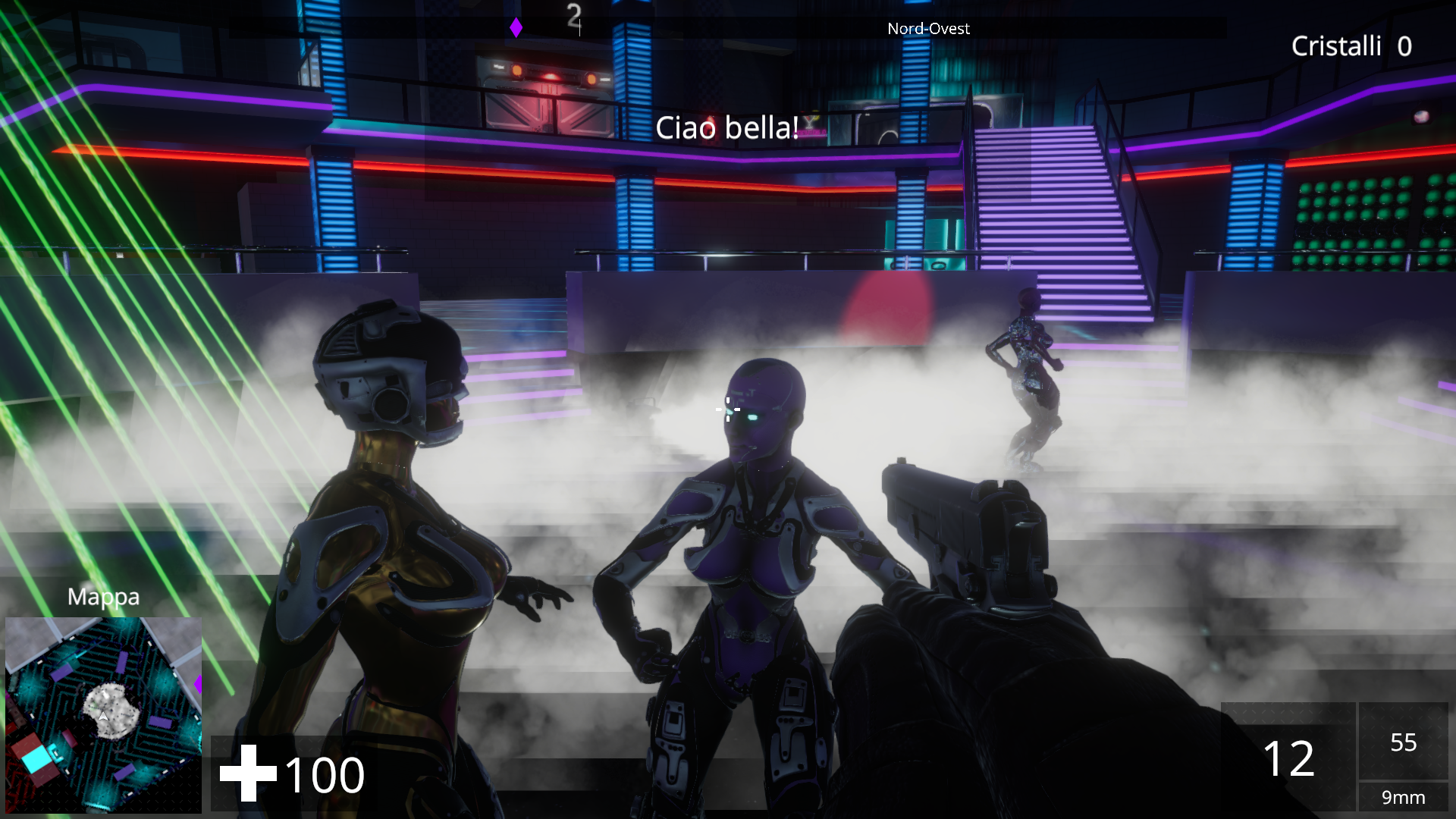
Repetition is a key learning aid to help people use a certain skill easily, and potentially even subconsciously. This is Linguist FPS’ bread and butter, but I’m not sure if a futile d’assalto (assault rifle) would help me so much while roaming the streets of Italy.
第三 time’s the charm?
My learning curve for Italian plateaued, so I decided to take a look at the other languages I could learn. I decided to go for Chinese (Mandarin), as it was a language I learned for years back in my university days. I used to be fine at it, but sadly, a majority of it has left me. With Linguist FPS, however, I was able to pick up a thing or two, and it acted as a light refresher with a touch of silly fun.
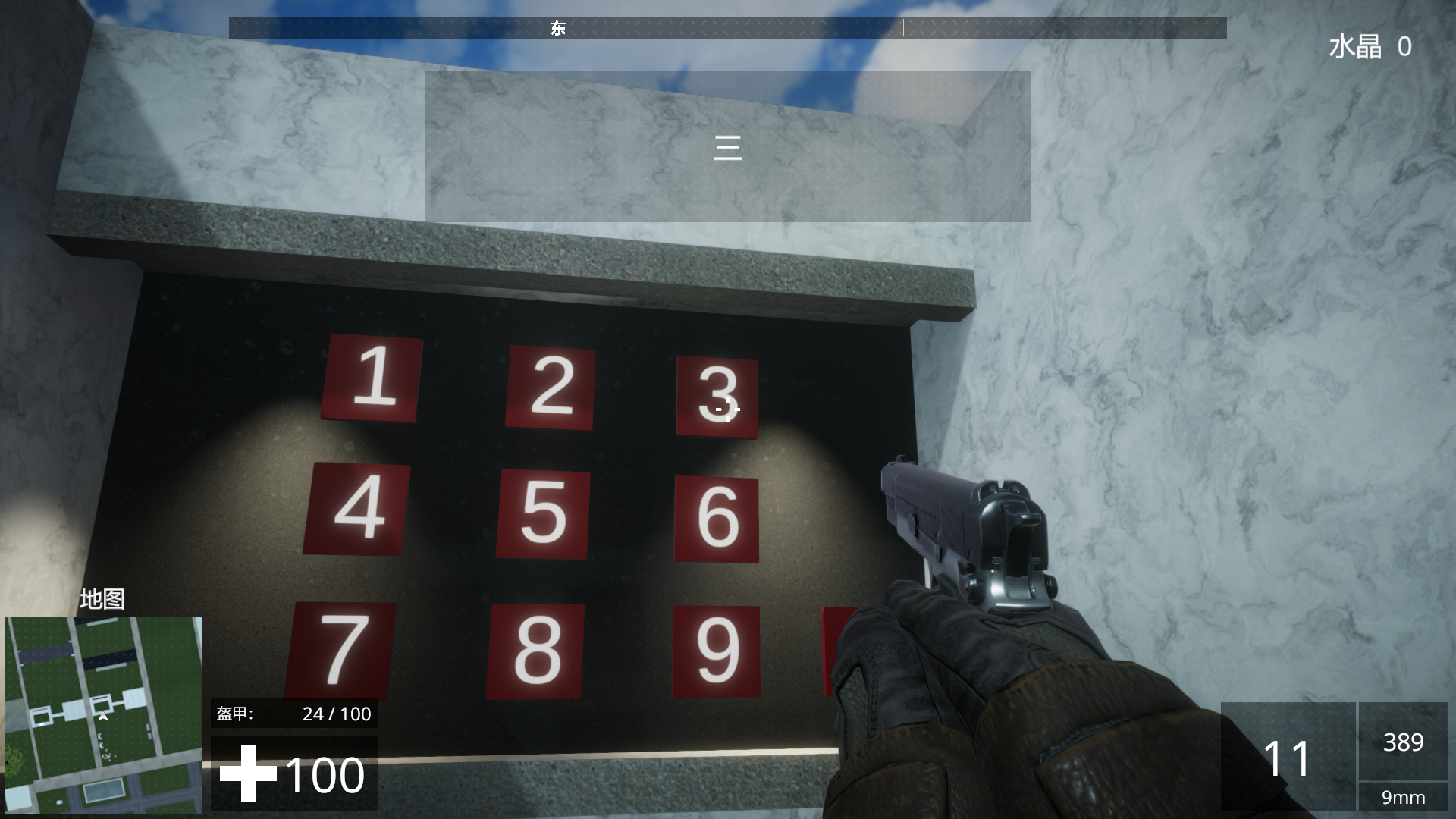
Not only was I rediscovering characters I had completely forgotten about, such as my ‘ol reliable 不错 (not bad), a convenient phrase I often used, I was also relearning phrases and saying them out loud — mostly because I recognised what they were.
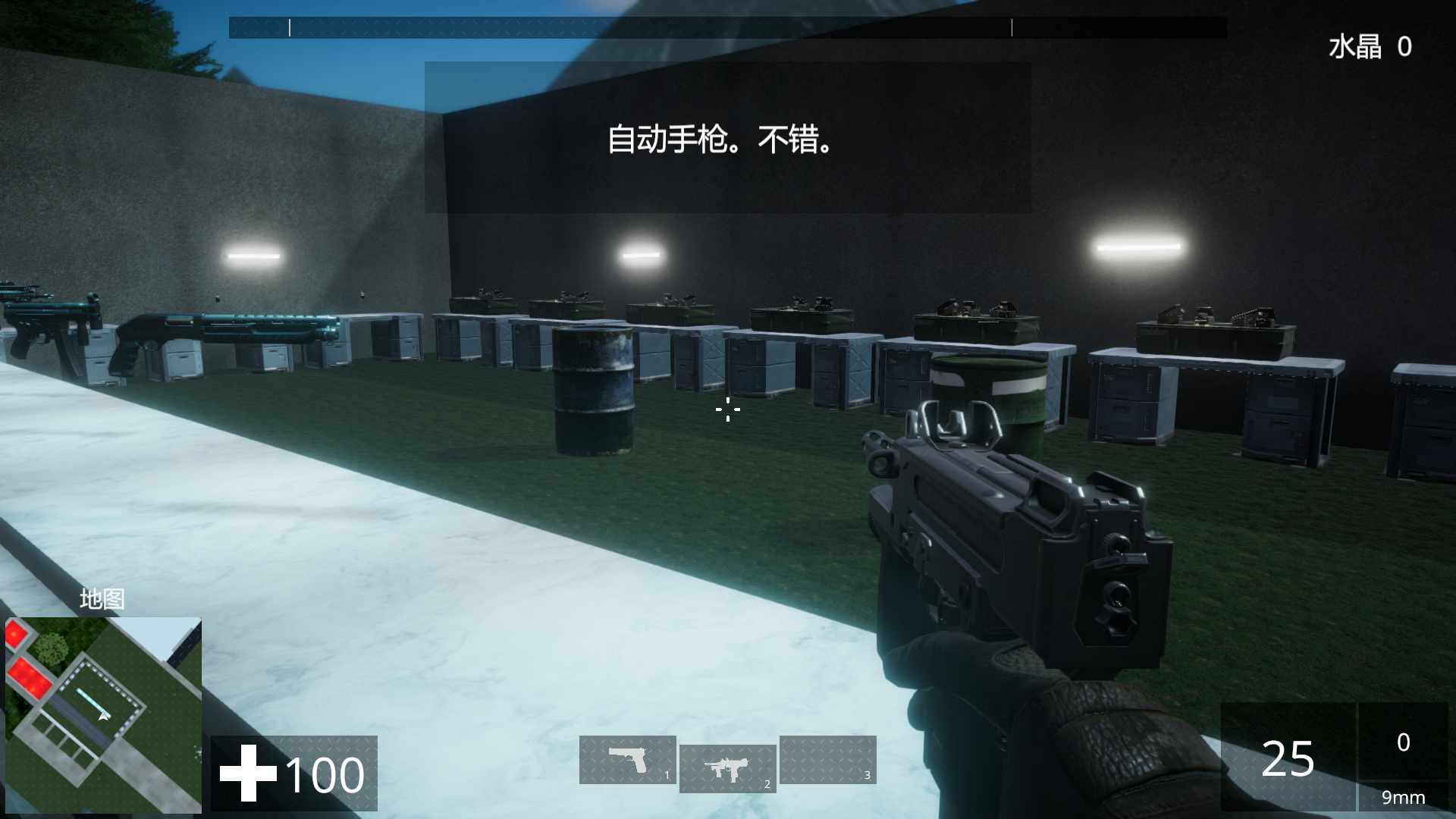
The flaw about learning a language from scratch in a fun, gamified way is that there’s no context to using what you learn in real life. I had no idea what the narrator was saying majority of the time while learning Italian, unless there was an icon showing me what it meant. However, in Mandarin, I was piecing together certain phrases, relearning words and figuring out what everything meant — all because I was brushing up on something I had already learned.
Final words
No, it’s not a good idea to start learning an entirely new language with an FPS game. Of course not. It was a struggle to think of the Italian words I learned and what they meant while writing this piece, which defeats the purpose of the game. Even if Linguist FPS had the budget to deliver a Call of Duty-like experience, it would be tricky as there are only so many mechanics to use before you start getting bored of learning the same words over and over again.
There is a good idea here; figuring out what the narrator is trying to tell you in order to progress is a way to remember phrases. But at the end of the day, you can use this trial and error process in any game if you just switch the language to something that isn’t your mother tongue.
This method of learning isn’t the worst as a refresher, though. Relearning phrases while having a silly time surviving waves of robots is fun. And if I recognise a phrase while I’m at it every now and again, then surely something is sticking in my noggin.

